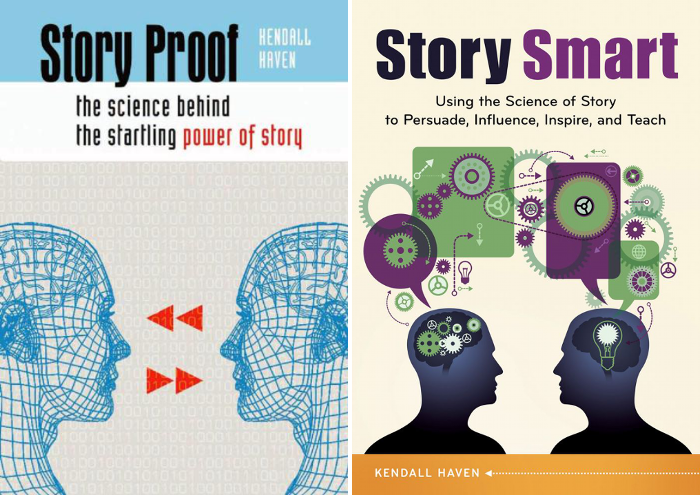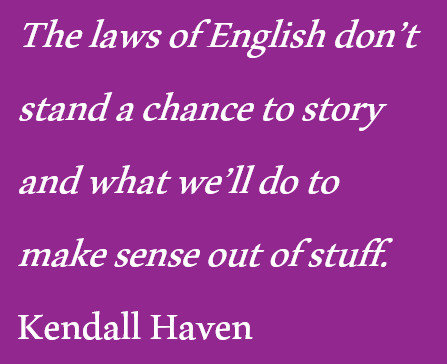
I’ve read much about the links between the brain and story, but nothing comes close to the work of Kendall Haven. He’s curated the results of over 1,000 different research studies in his seminal book, Story Proof, confirming undeniable connections between story, learning, and memory. And his most recent book, Story Smart, describes the only work that I know of which measured brain activity (EEG), physical effects (cardio & skin), and chemical changes (oxytocin and dopamine) while people listened to variations of a baseline story– all with the goal to understand what makes a story both interesting and memorable.
His 30 years of research have culminated into a simple, yet mind-blowing conclusion:
The only way that we learn is through story-structure. Period.
Haven teaches that our brains use story-structure to separate the stuff we should commit to memory from trivia. And he’s isolated the part of the brain that’s responsible for this feat. “The Neural Story Net,” he says, “turns sensory information into a story that makes sense to you.”
The Neural Story Net (NSN) sits between our five senses and the conscious part of our brains. Its job is to make sense of the random data that enters through sight, sound, smell, taste, and touch. The NSN treats all of this real-time information like jigsaw puzzle pieces. If a piece fits with one of our memories, it’s added to the picture. If it doesn’t, the NSN will do whatever necessary to force-fit the piece, including cutting, chipping, or morphing.
 And if that last sentence doesn’t trouble you, consider that this force-fitting process is the default condition. In other words, it’s safe to assume that the messages you send are not the messages being received.
And if that last sentence doesn’t trouble you, consider that this force-fitting process is the default condition. In other words, it’s safe to assume that the messages you send are not the messages being received.
“Research shows that we humans don’t really hear the exact words you say, anyway. We really hear the gist. We then reform that gist into words inside our own brains, using our own vocabulary. Then we ascribe our self-created personalized version back to the source, thinking that our own version is actually word for word, what the speaker said.” 1
But Haven doesn’t stop there. If listeners are assembling their own versions of your story in their heads, “…that forces your audience to kick their NSN and their Banks of Prior Knowledge into overdrive to fill in the gaps with what makes sense to them. Research experiments consistently identify two problems with that: 1) they are virtually always wrong with what they create and 2) their version is almost always more negative toward your organization, character, and information than you intended.” 2
Reread those last two points:
- they are virtually always wrong with what they create–which is not helping your cause.
- their version is almost always more negative toward your organization, character, and information. In other words, your carefully-crafted messages may be bolstering deep biases against you, your information, or your organization. Ouch.
So, what are professional communicators to do if their messages are left to the whim of the Neural Story Net? Haven recommends that messages should be delivered using the NSN’s native language: story-structure. Doing so simplifies gist-extraction and minimizes force-fitting.
Therefore, to ensure parity between the message delivered and message received, remember that nothing happens until someone makes your story their story.
Notes:
- Haven, Kendall (2014-10-14). Story Smart: Using the Science of Story to Persuade, Influence, Inspire, and Teach (pp. 17-18). ABC-CLIO. Kindle Edition.
- Haven, Kendall (2014-10-14). Story Smart: Using the Science of Story to Persuade, Influence, Inspire, and Teach (p. 51). ABC-CLIO. Kindle Edition.
Don’t let the prices for Story Proof ($35) and Story Smart ($40) dissuade you. By the time you finish them, you’ll never look at your writing the same way again.